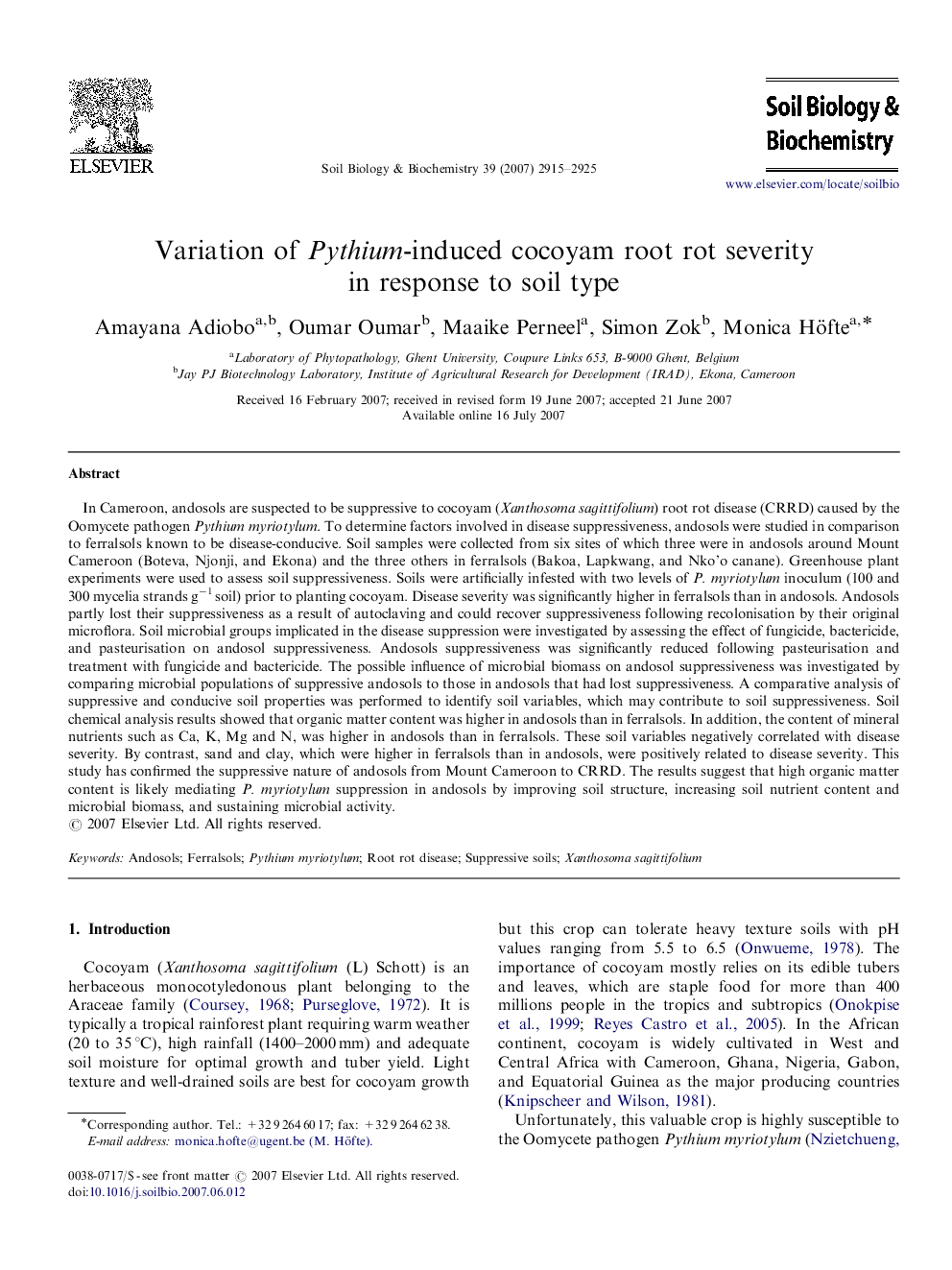| Article ID | Journal | Published Year | Pages | File Type |
|---|---|---|---|---|
| 2027040 | Soil Biology and Biochemistry | 2007 | 11 Pages |
Abstract
In Cameroon, andosols are suspected to be suppressive to cocoyam (Xanthosoma sagittifolium) root rot disease (CRRD) caused by the Oomycete pathogen Pythium myriotylum. To determine factors involved in disease suppressiveness, andosols were studied in comparison to ferralsols known to be disease-conducive. Soil samples were collected from six sites of which three were in andosols around Mount Cameroon (Boteva, Njonji, and Ekona) and the three others in ferralsols (Bakoa, Lapkwang, and Nko'o canane). Greenhouse plant experiments were used to assess soil suppressiveness. Soils were artificially infested with two levels of P. myriotylum inoculum (100 and 300 mycelia strands gâ1Â soil) prior to planting cocoyam. Disease severity was significantly higher in ferralsols than in andosols. Andosols partly lost their suppressiveness as a result of autoclaving and could recover suppressiveness following recolonisation by their original microflora. Soil microbial groups implicated in the disease suppression were investigated by assessing the effect of fungicide, bactericide, and pasteurisation on andosol suppressiveness. Andosols suppressiveness was significantly reduced following pasteurisation and treatment with fungicide and bactericide. The possible influence of microbial biomass on andosol suppressiveness was investigated by comparing microbial populations of suppressive andosols to those in andosols that had lost suppressiveness. A comparative analysis of suppressive and conducive soil properties was performed to identify soil variables, which may contribute to soil suppressiveness. Soil chemical analysis results showed that organic matter content was higher in andosols than in ferralsols. In addition, the content of mineral nutrients such as Ca, K, Mg and N, was higher in andosols than in ferralsols. These soil variables negatively correlated with disease severity. By contrast, sand and clay, which were higher in ferralsols than in andosols, were positively related to disease severity. This study has confirmed the suppressive nature of andosols from Mount Cameroon to CRRD. The results suggest that high organic matter content is likely mediating P. myriotylum suppression in andosols by improving soil structure, increasing soil nutrient content and microbial biomass, and sustaining microbial activity.
Related Topics
Life Sciences
Agricultural and Biological Sciences
Soil Science
Authors
Amayana Adiobo, Oumar Oumar, Maaike Perneel, Simon Zok, Monica Höfte,
